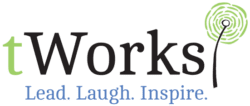The Human Side of Unconscious Bias
Are issues like these causing stress, conflict, confusion, time and money in the workplace?
Why this topic?
First impressions, positive or negative, are made in seven seconds or less. We all make quick assessments of others without even realizing it. We are not born with bias. Biases are formed by past situations, experiences, background and culture. Unconscious biases typically exist towards gender, race, religion, sexual orientation, age, disability (both physical and mental), and weight. Most of us will say “I see people for who they are” but do we? Unconscious biases affect and impact decision making both professionally and personally with real impact. Recognizing, managing and mitigating unconscious bias promotes diversity and inclusion. Diversity and inclusion drives innovation, increases productivity, and stimulates creativity while promoting a healthy, happy, engaging workplace culture.
